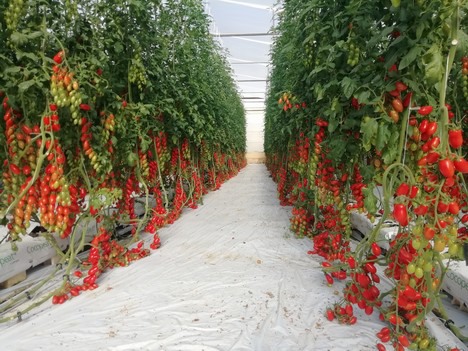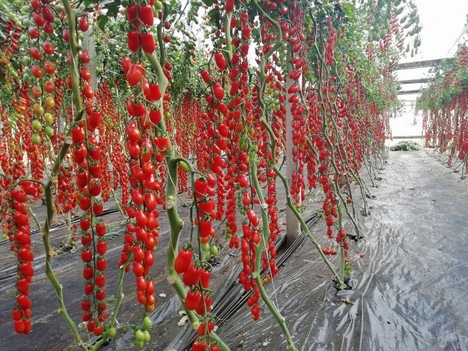Biotic adversities invading the tomato growing landscape are numerous and frequent. For the past couple of years Tomato Brown Rugose Fruit Virus (ToBRFV) (discovered in Israel - 2014 and first isolated in Jordan, -2015) belonging to the Tobamovirus genus, has been present.
The virus high contagiousness combined with the rapid spread over long distances and the impossibility to market infected fruits make it one of the most harmful pathogens in recent years because of the great economic impact it brought into the market, which is increasingly emerging in Sicily and Europe.

Climatic conditions, like light and temperature, can have some influence on the showing of symptoms that seem to evolve faster during spring-summer cycles. Symptoms occur through mosaic discolorations, deformation and necrosis on young leaves and vegetative apices, necrosis on sepals, discolorations and necrosis on young fruits.
Tomato Brown Rugose Fruit Virus is mechanically transmissible via infected seed, through cultivation practices, tools, equipment and circulating soil solution. Weed species include Petunia hybrida or Solanum nigrum, which can become the cause of the virus spread.
Even if resistant varieties have not been introduced on the market yet, there are some commercial varieties which, according to field observations, would appear to have an intermediate resistance (IR) to Tomato Brown Rugose Fruit Virus, showing a milder symptomatology or even no symptoms at all, as it is for tomato mini plum Miele F1.
The variety belonging to the Sicilian company Fenix, which is well-known to be a high-quality product thanks to the excellent characteristics constantly observed over time like very high sweetness degree and exceptional tolerance to cold and fruit cracking, is proving to be much less susceptible to the pathogen than many other similar ones.

This mini plum variety (Miele) has proved to be completely asymptomatic in many cultivations, despite being exposed to normal growing conditions and more or less intense inoculum doses. Therefore, this variety belongs to the so-called symptomless carriers because the viral sequences can be present or even multiply in the plant without causing an evident symptomatology.
Even though we still do not have scientifically certain proofs about this effective intermediate resistance because specific molecular markers are not yet available on the market, it is difficult to consider the evidence collected in the field as the result of simple and mere coincidences, considering also the diversity of conditions and the important number of cases in which the variety has already shown a real absence of symptoms.
Therefore, a plant with intermediate resistance can moderately limit the growth and development of the virus despite being attacked by it because resistance levels can vary without being mutually exclusive.
Fenix does not exclude the possibility to carry on molecular analyses to evaluate genetic resistance when this is possible, so that we can scientifically confirm the results that the variety is showing day after day in the field.
ToBRFV is becoming more and more evident as an epidemic pathogen, especially in Sicily and Europe; it is important to act carefully to limit the spread of the virus through preventive actions such as the use of virus-free and certified seeds and seedlings, crop rotations with non-host species, sanitization of cultivation environments, clothing used for work, tools and the removal of crop residues and weeds.
Choosing to cultivate certain varieties such as Miele F1, by implementing agronomic practices that limit as much as possible the stress that is linked to the cultivation, it gives the farmer a valuable tool to ensure continuity and excellent quality that characterize the Italian horticultural scene.
In order to get a right interpretation of the terms referred to the genetic resistances, please consult the ISF (International Seed Federation) terminology that you can find by clicking on our website at the following link: https://www.fenixseeds.com/en/legend-of-resistances/

Fenix Seeds
Via XVIII Traversa 68
Belpasso (CT) - Italy
+39 095 8369384
+39 095 3286516
+39 095 328 6517
info@fenixseeds.com
www.fenixseeds.com
